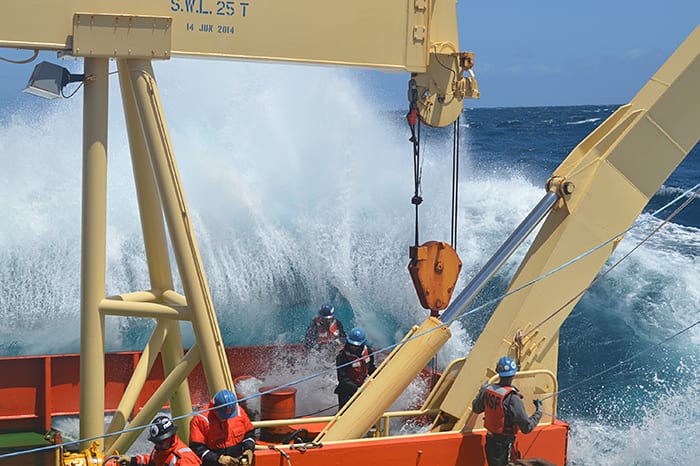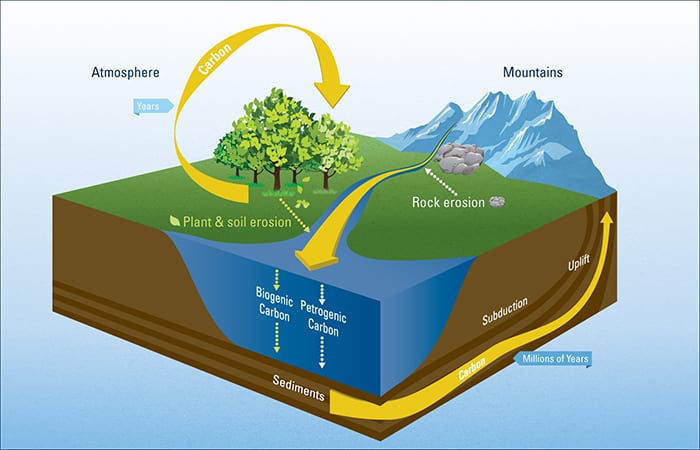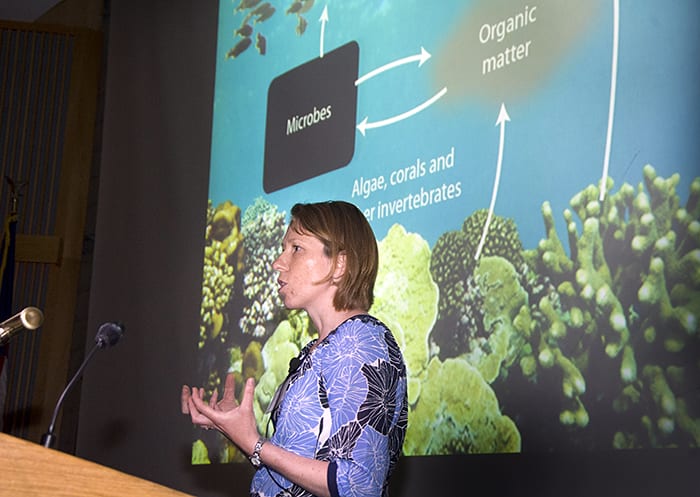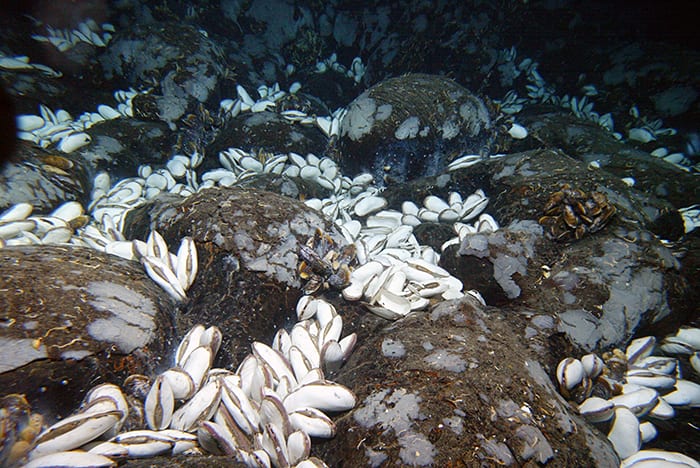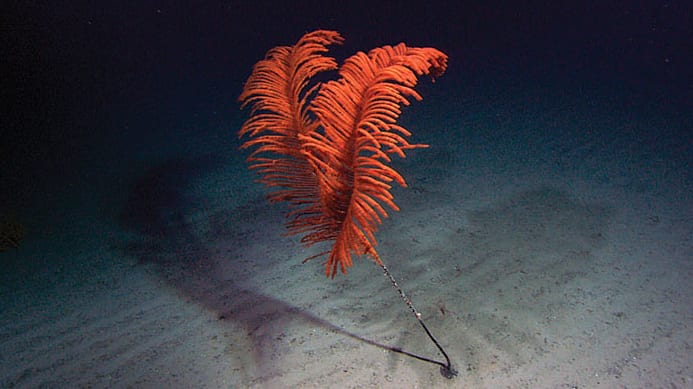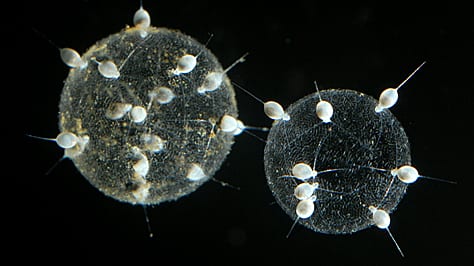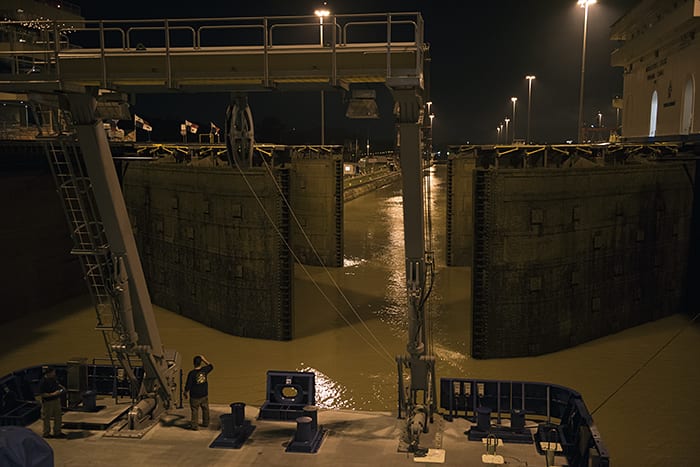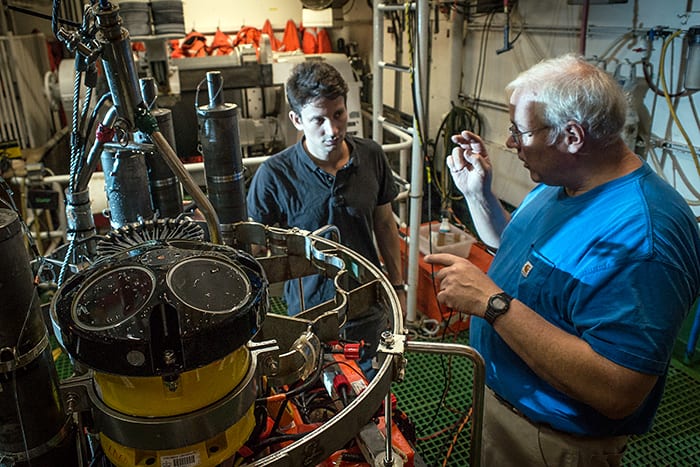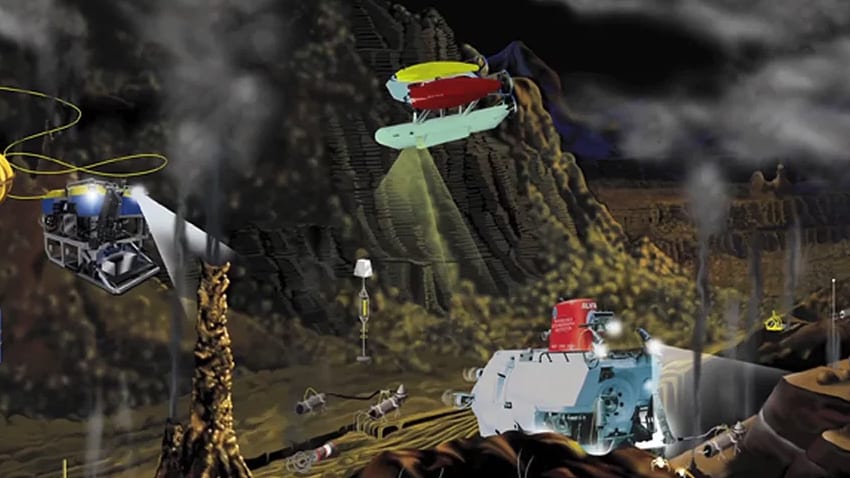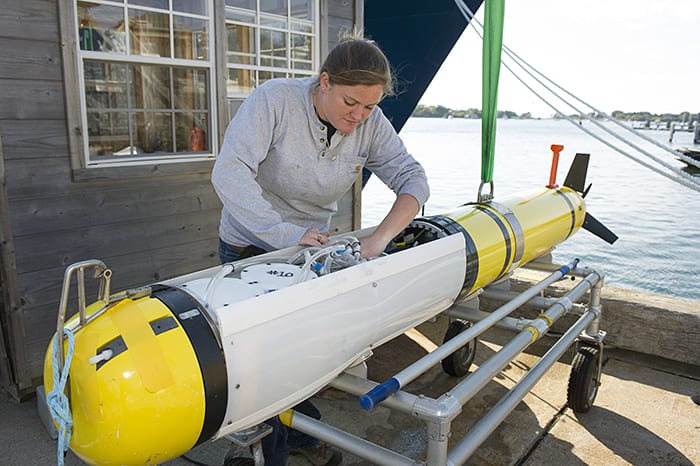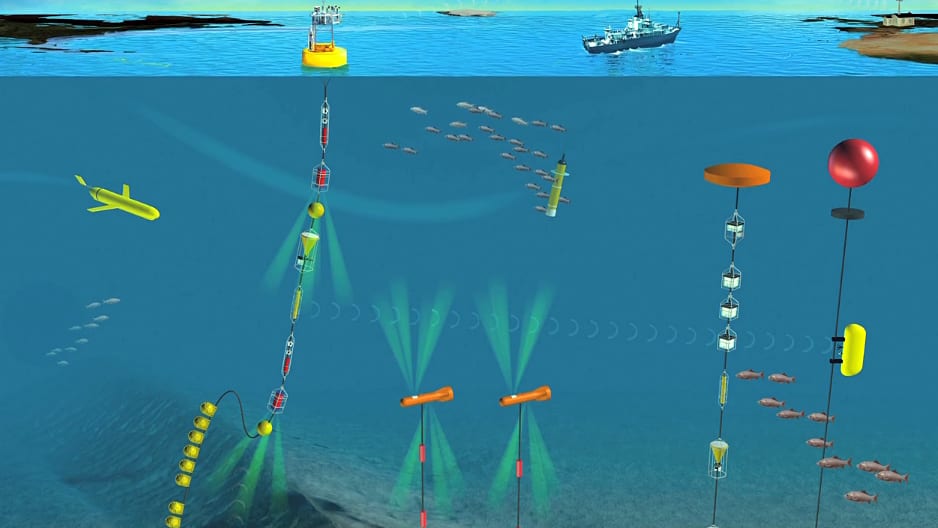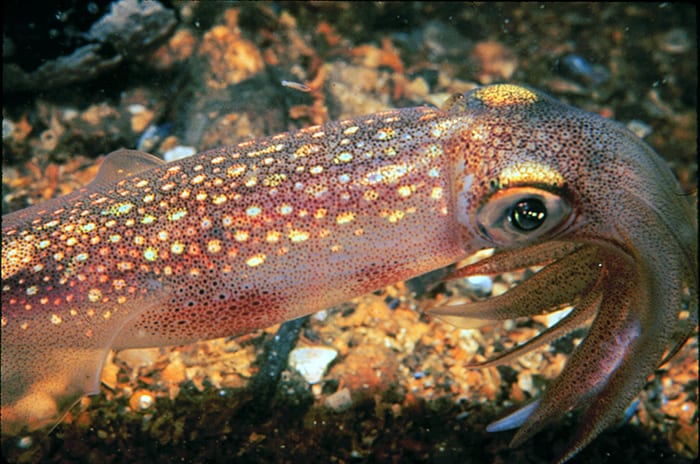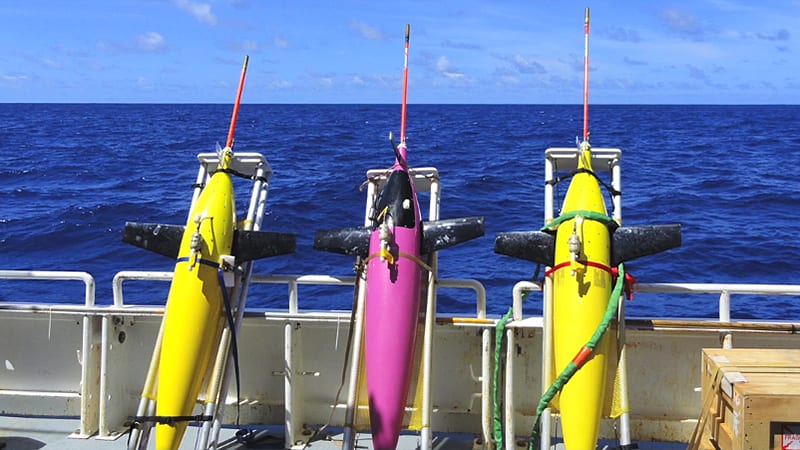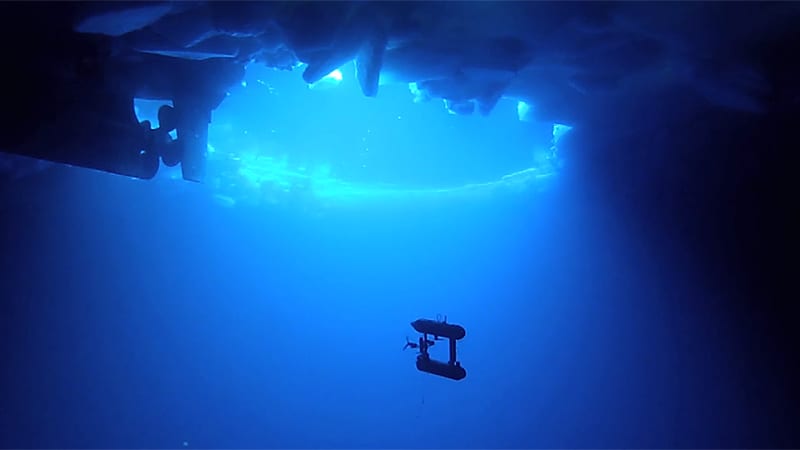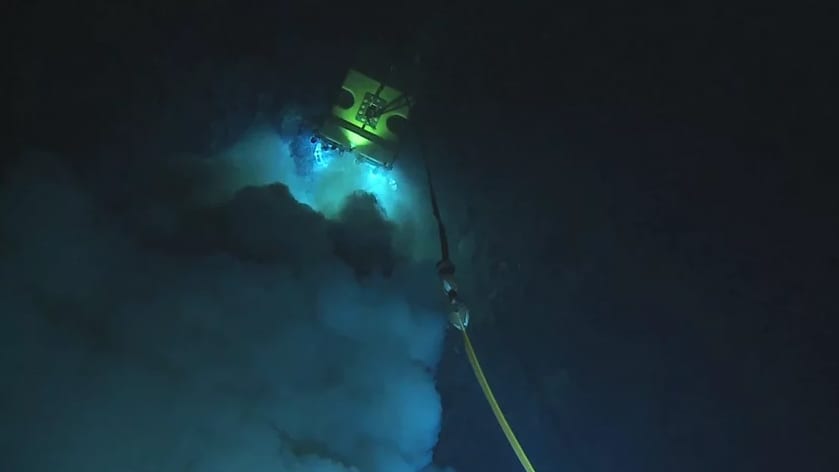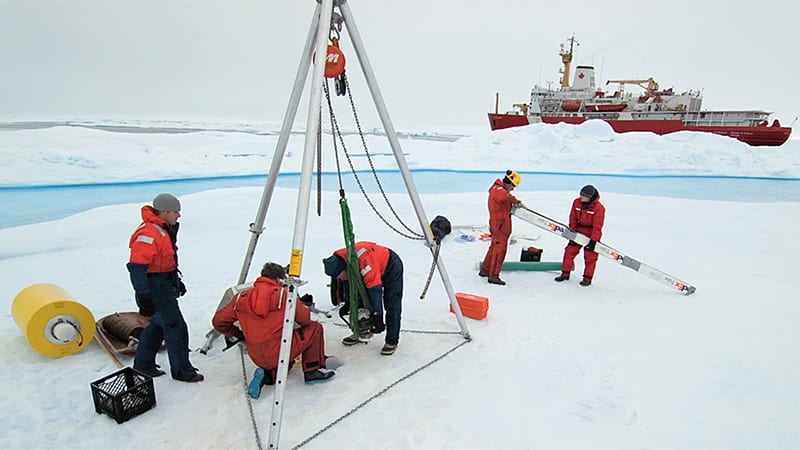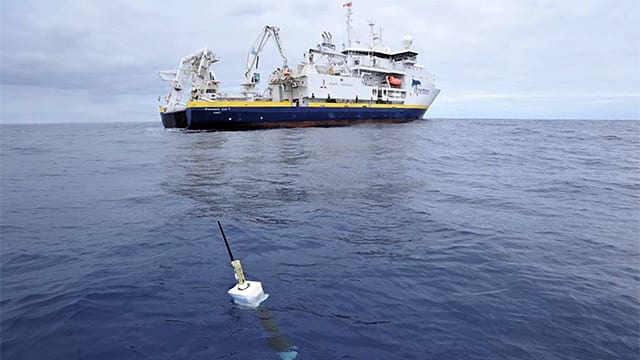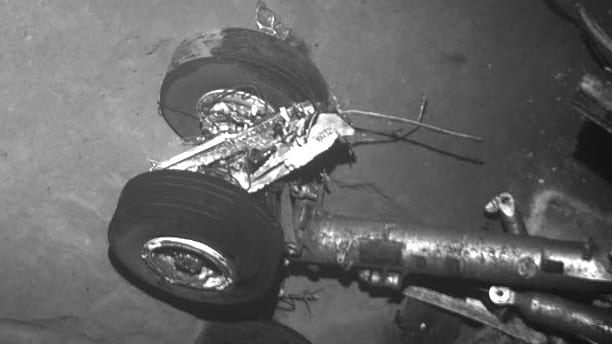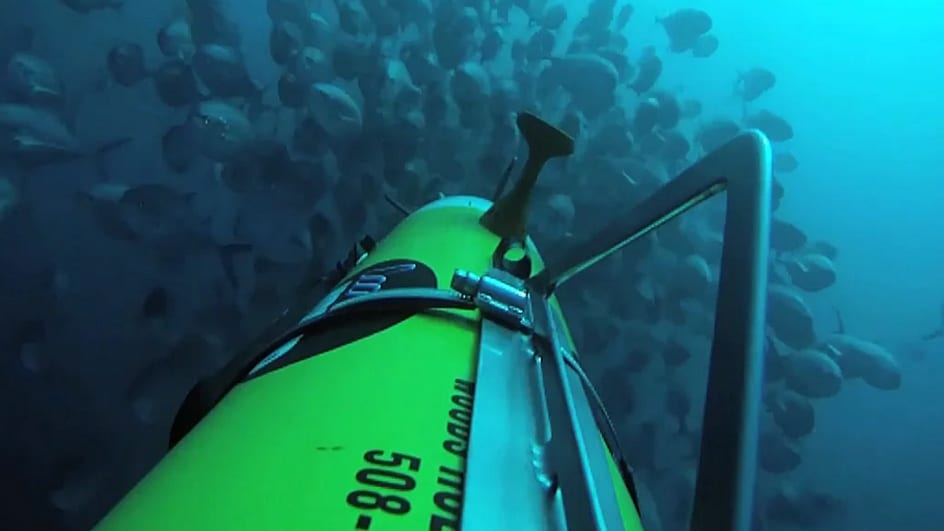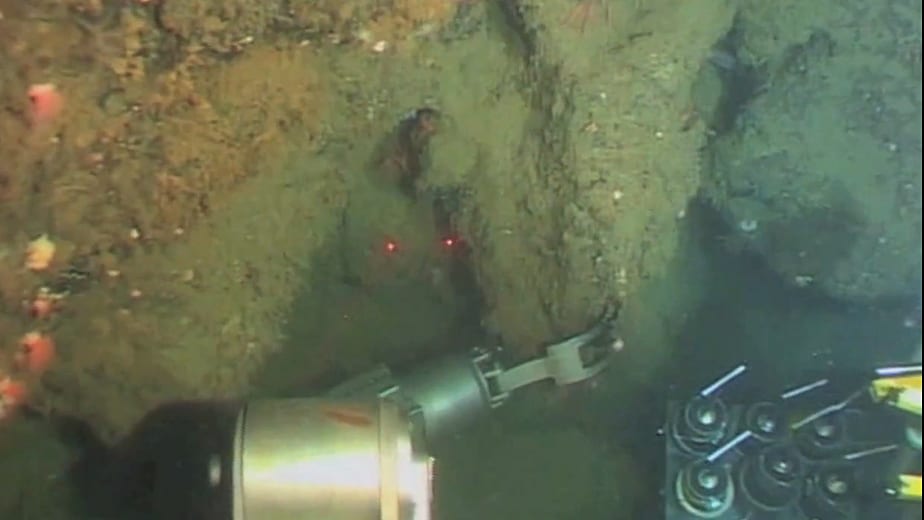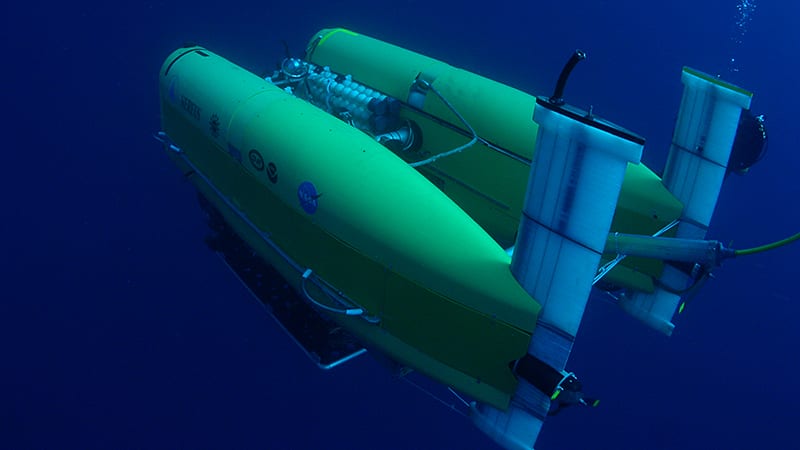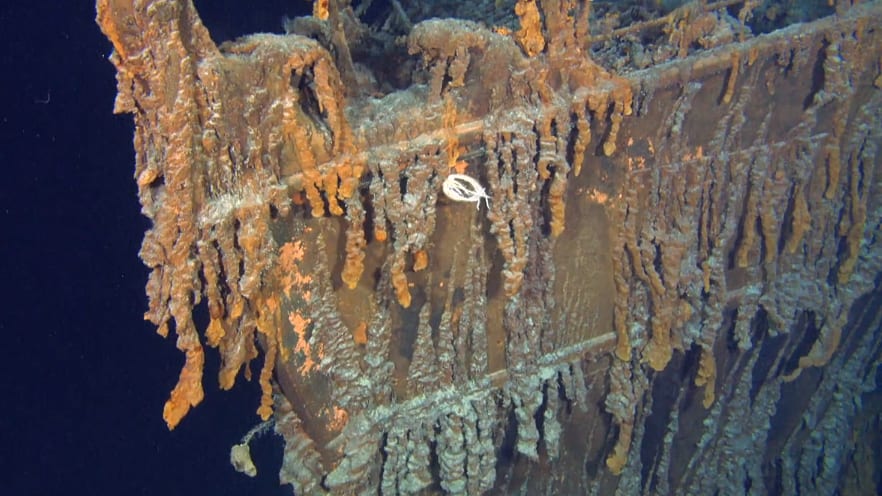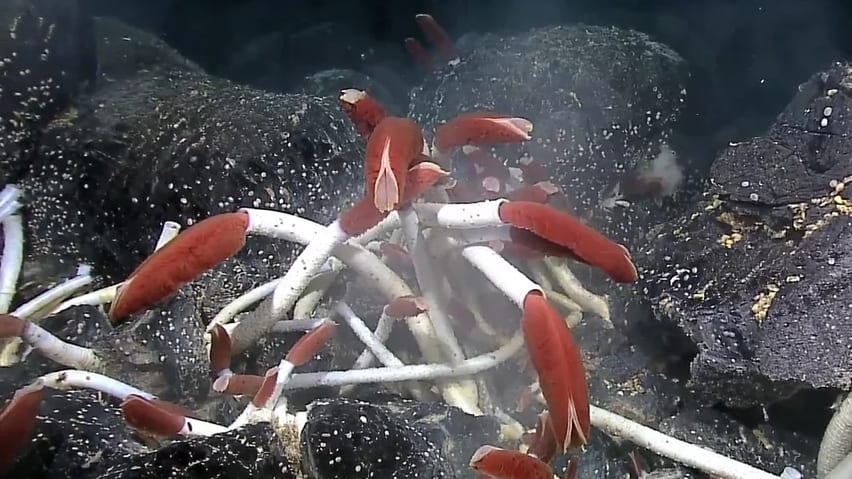Multimedia Items
Roaring Forties
A wave breaks over the fantail of the research vessel Nathaniel B. Palmer, drenching several people working on deck during a WHOI-led equipment recovery operation in November 2015. The ship…
Read MoreCarried by the River
The world’s river systems sequester atmospheric carbon dioxide by transporting decaying organic material from land to the ocean. Although river transport of carbon to the ocean is not large enough to…
Read MoreMysterious Microbes
WHOI microbiologist Amy Apprill, shown here giving a presentation in 2013, studies the relationships between microorganisms and marine animals. Like humans, marine animals have bacteria living on their skin. While…
Read MoreRevisiting History
In 2002 WHOI scientists re-visited the seafloor near the Galápagos Islands, where in 1977 hydrothermal vents were found to support thriving communities of diverse organisms that survive on a foundation of chemosynthesis. Diving…
Read MoreLife on Seamounts
Microbial Life
Breaking Ground
The Institution’s fourth director, Paul Fye (left) presided over a period of major change during his tenure in office from 1958 to 1977. It was a time of national interest…
Read MoreDoors Closing
Gates in the Miraflores Lock of the Panama Canal close behind R/V Neil Armstrong as the ship passed from the Pacific to the Atlantic recently on its inaugural voyage. In one…
Read MoreClass In Session
WHOI engineer Marshall Swartz (right) instructs Louis Clement, a post-doctoral scientist at the Lamont-Doherty Earth Observatory, on the technical intricacies of a CTD rosette equipped with a lowered acoustic doppler current profiler (ADCP). The two were…
Read MoreOcean Robots: What is a Robot?
The word ‘robot’ means a lot of things to a lot of people. So what exactly is an ocean robot and what do they do? Find out what they are…
Read MoreSampler for Shallow Seas
WHOI engineer Kaitlyn Tradd works on a new sampling system called SUPR-REMUS. The device consists of a multi-sampling Suspended Particulate Rosette sampler (SUPR) mounted on a REMUS autonomous underwater vehicle. A…
Read MoreOcean Robots: The Future of Marine Robotics
The word ‘robot’ means a lot of things to a lot of people. So what exactly is an ocean robot and what do they do? Find out what they are…
Read MoreSerene Squid
Squid such as this Dortyteuthis pealeii are common prey for many fish, whales, and even humans. WHOI researchers have studied how whales use sonar to find squid, how humans might…
Read MoreOcean Robots: Mapping Salinity
The saltiness of the ocean varies across large and small scales in ways that are sometimes linked to changing global water cycle. Mapping salinity requires robots like gliders to make…
Read MoreOcean Robots: Sea Ice
The ice-covered ocean is a notoriously difficult environment to study. Autonomous SeaBED vehicles took to the challenge, mapping the underside of floating sea ice and giving scientists a look at…
Read MoreOcean Robots: Underwater Volcano
In 2009, oceanographers using the remotely operated vehicle (ROV) Jason recorded the first video and still images of a deep-sea volcano actively erupting molten lava on the seafloor.
Read MoreOcean Robots: Arctic Ocean
Scientists are using robotic platforms like the Ice-Tethered Profiler to give them a look beneath ice-covered waters in order to understand conditions in the fragile and fast-changing Arctic Ocean.
Read MoreOcean Robots: Open Ocean
The open ocean is vast and deep—something only an army of robotic Argo floats could begin to map in ways that help scientists understand processes that play out far from…
Read MoreOcean Robots: Air France Flight 447
Questions surrounding the disappearance of Air France flight 447 could only be answered by finding the wreckage of the airplane on the rugged seafloor of the mid-ocean ridge—a job designed…
Read MoreOcean Robots: Continental Shelfbreak
The edge of the North American continental shelf is a dynamic place where conditions create a vibrant and productive marine ecosystem. REMUS 100 is helping reveal just how special the…
Read MoreOcean Robots: Hydrocarbon Seeps
Places where hydrocarbons naturally seep from the seafloor provide a way to study how oil spills in the ocean change over time. But scientists need vehicles like Sentry, Jason, or…
Read MoreOcean Robots: Challenger Deep
Exploring Challenger Deep requires a special tool—one like Nereus designed specifically to reach the ocean’s greatest depths and take scientists places they’ve never been before.
Read MoreOcean Robots: RMS Titanic
After RMS Titanic was discovered in 1985, scientists returned several times to photograph and map the fabled wreck, shedding light on how it sank, and how wrecks around the world…
Read MoreOcean Robots: Hydrothermal Vents
Since they were discovered in the East Pacific in 1977, hydrothermal vents have captivated scientists and the public alike. New search methods using underwater robots are helping discover vent sites…
Read More
